Roy Miller's Blog, page 221
April 11, 2017
2017 Pulitzer Prize Winners – The New York Times
This content was originally published by THE NEW YORK TIMES on 10 April 2017 | 11:15 pm.
Source link
__________
BREAKING NEWS REPORTING
Dozens of journalists at The East Bay Times worked on the coverage of the deadly “Ghost Ship” fire in Oakland, Calif., in December, which killed 36 people at a warehouse party. “We had everybody involved, from investigative reporters to artists to breaking news reporters,” said Neil Chase, the paper’s executive editor. Mr. Chase said the paper, whose reporting also revealed the city’s shortcomings in preventing the tragedy, was donating the cash prize that comes with the award to a local fund for the victims.
Finalists: The staff of The Dallas Morning News | The staff of The Orlando Sentinel
__________
INVESTIGATIVE REPORTING
Eric Eyre, The Charleston Gazette-Mail
Photo
Mr. Eyre (pronounced AIR), 51, won the award for a series of articles about the opioid abuse epidemic in West Virginia. Mr. Eyre, the paper’s statehouse reporter, began his multipart series with these words: “Follow the pills and you’ll find the overdose deaths.” It took Mr. Eyre years to acquire the documents most important to his reporting, and he did it “in the face of powerful opposition,” according to the Pulitzer citation. A lawyer defending a drug wholesale company said that it was vital to protect crucial court records “from the intrusive journalistic nose of the Gazette-Mail.”
Finalists: Michael J. Berens and Patricia Callahan of The Chicago Tribune | Steve Reilly of USA Today Network
__________
EXPLANATORY REPORTING
The International Consortium of Investigative Journalists, McClatchy and The Miami Herald
Continue reading the main story
A sprawling network of journalists was awarded the prize for their explosive articles on the so-called Panama Papers. The Pulitzer board commended the “collaboration of more than 300 reporters on six continents to expose the hidden infrastructure and global scale of offshore tax havens.” The work was originally submitted for the international reporting award, but the board moved it to the explanatory reporting category.
Finalists: Joan Garrett McClane and Joy Lukachick Smith of The Chattanooga Times Free Press | Julia Angwin, Jeff Larson, Surya Mattu, Lauren Kirchner and Terry Parris Jr. of ProPublica | The Staff of National Geographic
Continue reading the main story
__________
LOCAL REPORTING
The staff of The Salt Lake Tribune
The prize honored reports about “the perverse, punitive and cruel treatment given to sexual assault victims at Brigham Young University.” The Tribune’s first article said that the university, owned by the Church of Jesus Christ of Latter-day Saints, investigated students who reported sex crimes — and sometimes disciplined them for breaking rules on curfews and dress codes. The Tribune also found that the school’s Title IX office, to which students could report sexual assaults, regularly alerted the honor code office, which looked into the rule violations. In November, Brigham Young took steps to restructure the Title IX office. The school also said that students who reported sexual assaults would no longer risk having their conduct reviewed by the honor code office.
Finalists: Jenna Russell, Maria Cramer, Michael Rezendes, Todd Wallack and Scott Helman, The Boston Globe | Michael Schwirtz, Michael Winerip and Robert Gebeloff, The New York Times
__________
NATIONAL REPORTING
David A. Fahrenthold, The Washington Post
Photo

Mr. Fahrenthold was cited for his reporting during the 2016 presidential campaign, which cast doubt on Donald J. Trump’s “assertions of generosity toward charities.” A month after Mr. Trump skipped a Republican debate in Iowa to attend a fund-raiser for veterans, Mr. Fahrenthold found that only about half of the money had gone to veterans’ charities. Mr. Fahrenthold, 39, later found that Mr. Trump had used his own foundation’s money for business-related legal settlements and purchases that included two portraits of himself. In October, Mr. Fahrenthold received a tip about a video that showed Mr. Trump talking about women in vulgar terms. “The voice you’d heard in so many other contexts was talking in a way we’d never heard before,” Mr. Fahrenthold said Monday. “That’s what made it so powerful.”
Finalists: Renee Dudley, Steve Stecklow, Alexandra Harney and other members of the Reuters Staff | The staff of The Atlanta Journal-Constitution
Continue reading the main story
__________
INTERNATIONAL REPORTING
The staff of The New York Times
In “Russia’s Dark Arts,” a team of New York Times journalists across two continents chronicled the covert and sometimes deadly actions taken by President Vladimir V. Putin’s government to grow Russian influence abroad. The series, which began last spring, explored the rise of online “troll armies,” the strategic spreading of disinformation and Russia’s unprecedented — and politically consequential — cyberattack on the 2016 American presidential election.
Finalists: Chris Hamby, BuzzFeed News | The staff of The Wall Street Journal | International Consortium of Investigative Journalists, McClatchy and The Miami Herald
__________
FEATURE WRITING
C.J. Chivers, The New York Times
Photo

Mr. Chivers, 52, spent months crafting his 18,102-word portrait of a young combat veteran haunted by his experiences in Afghanistan, who was imprisoned after a violent fight with a stranger. Unflinching yet empathetic, the reporting by Mr. Chivers — himself a former Marine — prompted the state of Illinois to vacate the veteran’s jail sentence. “The truth literally set a young man free,” Jake Silverstein, the editor of The New York Times Magazine, where the story appeared, said Monday.
Finalists: Adam Entous and Devlin Barrett, The Wall Street Journal | Eli Saslow, The Washington Post
Continue reading the main story
__________
COMMENTARY
Peggy Noonan, The Wall Street Journal
Photo
[image error]
Ms. Noonan, 66, has been a longtime observer and participant in the political sphere, having worked as a speechwriter to President Ronald Reagan. Her winning columns addressed the bruising 2016 campaign season and the rise of Mr. Trump, analyzing his populist appeal and his effect on the Republican Party. Paul Gigot, the editor of The Wall Street Journal’s editorial page, wrote in a memo to the newsroom, “Peggy didn’t shrink from addressing Trump’s many flaws as a candidate, but she always showed great respect for the intelligence of voters and explained the currents of American life and politics that catapulted Trump to the White House.”
Finalists: Dahleen Glanton, The Chicago Tribune | Trudy Rubin, Philadelphia Media Network
__________
CRITICISM
Photo
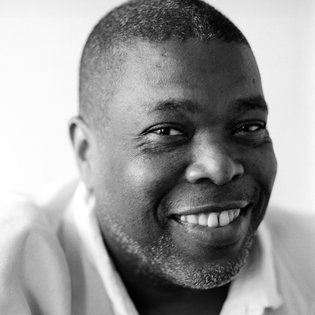
A staff writer at The New Yorker since 1994, Mr. Als, 56, was praised for reviews that “strove to put stage dramas within a real-world cultural context,” particularly when it comes to themes of gender, sexuality and race. Mr. Als, who was a finalist last year, is known for stylish and trenchant prose, and won the honor for a set of 10 pieces that covered works including “The Color Purple” and “Dear Evan Hansen.” American theater, he said in an interview, is an a transitional state. “We’re living in an amazing age,” he said. “All kinds of stories are going to be told now that just didn’t get an audience before. That’s thrilling to me.”
Finalists: Laura Reiley, The Tampa Bay Times | Ty Burr, The Boston Globe
Continue reading the main story
__________
EDITORIAL WRITING
Art Cullen, The Storm Lake Times
Photo

There is no mistaking the anger in the voice of The Storm Lake Times when it writes about the legacy of big agriculture: “Anyone with eyes and a nose knows in his gut that Iowa has the dirtiest surface water in America.” That voice is personal, too. It belongs to Mr. Cullen, 59, who owns the newspaper with his brother John. The Times comes out twice a week and has a circulation of 3,000. Among its admiring readers were Pulitzer jurors. They cited Mr. Cullen’s “tenacious reporting, impressive expertise and engaging writing.”
Finalists: Fred Hiatt, The Washington Post | Joe Holley, The Houston Chronicle
Continue reading the main story
__________
Photo
[image error]
Credit
Jim Morin/Miami Herald
EDITORIAL CARTOONING
Photo

The looming ogre of “Nationalism,” armed with a malevolent grin and the club of “Racism,” opened the door and cast his menacing shadow last June. “Hello,” he said. “Remember me?” For this and other work portraying a frightening America, Mr. Morin, 64, earned his second Pulitzer Prize. (The first was in 1996.) The Pulitzer jurors said he “delivered sharp perspectives through flawless artistry, biting prose and crisp wit.”
Finalists: Jen Sorensen | Steve Sack, The Star Tribune
Continue reading the main story
__________
BREAKING NEWS PHOTOGRAPHY
Daniel Berehulak, The New York Times
Photo

Mr. Berehulak, 41, was recognized for work that showed “the callous disregard for human life in the Philippines brought about by a government assault on drug dealers and users.” On Monday, Mr. Berehulak described observing “an assembly line of state-sanctioned murder” over 35 days in Manila. He dedicated his award to the families of those killed, saying he hoped “their pain might somehow be remedied by justice.” He was previously awarded a Pulitzer Prize for feature photography in 2015 for his work documenting the Ebola epidemic in West Africa.
Finalists: The staff of The Associated Press | Jonathan Bachman, Reuters
__________
FEATURE PHOTOGRAPHY
E. Jason Wambsgans, The Chicago Tribune
Photo
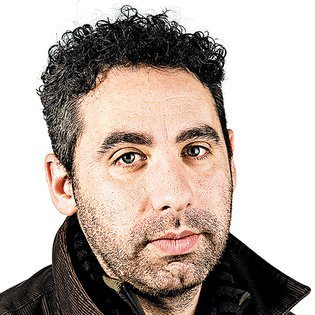
Mr. Wambsgans, 44, was honored for his portrayal of a 10-year-old boy and his mother after the boy survived a shooting in Chicago. He has mainly photographed violence in the city for the past four years.
“Because he and his mother were so open, it was just a deeper level of intimacy than we’re typically able to convey,” Mr. Wambsgans said. “It’s kind of a bittersweet thing because there’s not a week that goes by that I don’t worry about this boy and his future.”
Finalists: Jake May, The Flint Journal | Katie Falkenberg, The Los Angeles Times
__________
FICTION
Colson Whitehead, “The Underground Railroad”
Photo
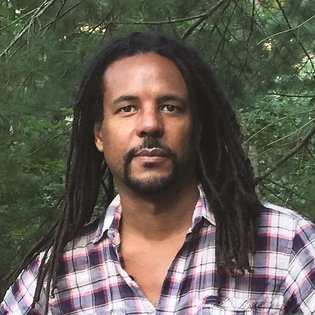
Credit
Madeline Whitehead
When he was working on his hallucinatory and chilling novel, which reimagines American slavery, Mr. Whitehead studied works by masters of magical realism, including Toni Morrison’s “Beloved” and Gabriel García Márquez’s “One Hundred Years of Solitude.” His aim was to write about “the fantastic with a straight face.”
Continue reading the main story
Mr. Whitehead, 47, said the critical reactions to the book have been enormously gratifying (the novel also won the National Book Award). But one of the most meaningful responses came from a stranger who approached him in a bookstore. “She said, ‘Your book made me a more empathetic person,’” he said.
Past coverage: Profile | Review | Sunday Book Review
Finalists: “Imagine Me Gone,” by Adam Haslett (Sunday Book Review) | “The Sport of Kings,” by C. E. Morgan (Review | Sunday Book Review)
__________
DRAMA
Photo

Ms. Nottage’s play explores working-class alienation in Reading, Pa., a city that has been hurt by deindustrialization. The Pulitzer citation called “Sweat,” which is currently running on Broadway, “a nuanced yet powerful drama that reminds audiences of the stacked deck still facing workers searching for the American dream.”
Continue reading the main story
“I was trying to understand how economic stagnation is reshaping our cultural narrative,” Ms. Nottage said, “and wanting to tell the story of what was happening to people on the ground in a way that was truthful and emotional and unapologetic.”
Continue reading the main story
This is the second Pulitzer Prize for Ms. Nottage, 52, who won in 2009 for “Ruined,” a play about rape in the Democratic Republic of Congo.
Past coverage: Review | Feature | Off-Broadway Review | Ashland, Ore. Review
Finalists: “The Wolves,” by Sarah DeLappe (Review | Off-Broadway Review | Feature) | “A 24-Decade History of Popular Music,” by Taylor Mac (Review | Feature )
Continue reading the main story
__________
HISTORY
Heather Ann Thompson, “Blood in the Water”
Photo
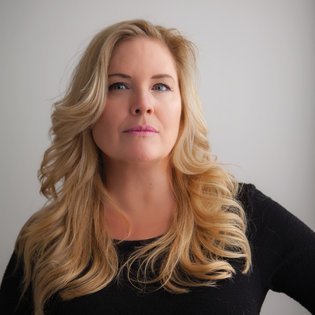
Credit
Graham MacIndoe
Ms. Thompson spent 13 years researching this account of the Attica prison uprising, which the Pulitzer board cited as “a narrative history that sets high standards for scholarly judgment and tenacity of inquiry.” In addition to extensive archival research, Ms. Thompson, 53, interviewed dozens of survivors, participants and observers, many of whom spent decades fighting to uncover the truth about the violent retaking that left 39 prisoners and hostages dead.
“This was a story that the people inside of that prison have been trying to tell for 45 years,” she said.
Past coverage: News Feature | Review | Sunday Book Review
Finalists: Larrie D. Ferreiro, “Brothers at Arms: American Independence and the Men of France and Spain Who Saved It” | Wendy Warren, “New England Bound: Slavery and Colonization in Early America” (Sunday Book Review)
__________
BIOGRAPHY
Hisham Matar, “The Return: Fathers, Sons and the Land in Between”
Photo
[image error]
Credit
Diana Matar
Mr. Matar was a 19-year-old student in England when his father, a prominent critic of the government of Col. Muammar el-Qaddafi living in exile, was kidnapped and taken to a secret prison in Libya. This memoir recounts Mr. Matar’s return to his homeland 22 years later, after the fall of that government, to find out what happened to him. The Pulitzer citation called it “a first-person elegy for home and father,” executed with “controlled emotion.” In an interview last year with The New York Times, Mr. Matar, 46, was asked to imagine what his father would have made of his journey.
“My failure to cure myself of Libya would have amused and perhaps even comforted him,” Mr. Matar said. “My search for him would have not. He wanted me, above all things, to be free and happy.”
Past coverage: Review | Sunday Book Review | Q&A | Excerpt in Sunday Review
Finalists: Susan Faludi, “In the Darkroom” (Review | Sunday Book Review) | Paul Kalanithi, “When Breath Becomes Air” (Review | Sunday Book Review | Well Review | Q&A With Widow | Essay by Widow)
Continue reading the main story
__________
POETRY
Tyehimba Jess, “Olio”
Photo

Mr. Jess’s second book of poems is a kaleidoscopic and formally ambitious collection about African-American artists between the Civil War and World War I, and the ways in which they both fought against and tried to make creative use of the cultural pressures of minstrelsy. Scott Joplin plays a prominent role in the book’s imagination, as do less well-known figures, most but not all musicians. “American music is critically and fundamentally tied to the African-American experience, the experience of a people who were denied access to literacy for most of our time in this country through slavery,” Mr. Jess, 51, said in an interview in March with The New School. “They were forced to forge another kind of literacy through the music.”
Finalists: Adrienne Rich, “Collected Poems: 1950-2012” (Review) | Campbell McGrath, “XX”
__________
GENERAL NONFICTION
Matthew Desmond, “Evicted: Poverty and Profit in the American City”
Photo

Credit
Michael Kienitz
In his meticulously reported book, Mr. Desmond, a sociologist, followed eight impoverished families in Milwaukee as they struggled to make rent. Mr. Desmond, 37, a director of the Justice and Poverty Project at Harvard, said he decided to investigate the causes and the repercussions of evictions as a way to write about the systemic causes of poverty in the United States.
“America’s the richest country, with the worst poverty,” he said. “That ugly fact has troubled me for a long time, and I wanted to understand the role that housing plays.”
Past Coverage: Profile | Review | Sunday Book Review | Sunday Review Essay | Op-ed
Finalists: “In a Different Key: The Story of Autism,” by John Donvan and Caren Zucker (Sunday Book Review) | “The Politics of Mourning: Death and Honor in Arlington National Cemetery,” by Micki McElya
Continue reading the main story
__________
MUSIC
Du Yun, “Angel’s Bone”
Photo
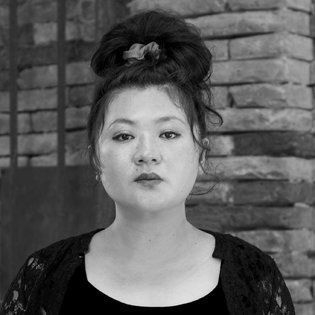
Credit
Civitella Ranieri Foundation
Ms. Du, 39, won for her savage chamber opera, a collaboration with the librettist Royce Vavrek, which finds an allegory for human trafficking in the story of two angels who are brutally mistreated after they crash-land in a suburban backyard.
“In the U.S., trafficking seems very far from us, in Southeast Asia or Eastern Europe,” she said. “But it’s happening right in front of our eyes. And that’s how this arose, to be able to create a platform that’s not didactic, but a work that allows ideas to blossom.”
Past coverage: Review
Finalists: Ashley Fure, “Bound to the Bow” (Review) | Kate Soper, “Ipsa Dixit”
Continue reading the main story
The post 2017 Pulitzer Prize Winners – The New York Times appeared first on Art of Conversation.
April 10, 2017
Whitehead, Thompson Among 2017 Pulitzer Prize Winners
This content was originally published by on 1 January 1970 | 12:00 am.
Source link
Colson Whitehead and Heather Ann Thompson took home the prizes for ‘The Underground Railroad’ and ‘Blood In the Water’ respectively during the 101st installment of the awards.
Source link
The post Whitehead, Thompson Among 2017 Pulitzer Prize Winners appeared first on Art of Conversation.
Book Pins Corporate Greed on a Lust Bred at Harvard
This content was originally published by ANDREW ROSS SORKIN on 11 April 2017 | 1:07 am.
Source link
His answer? “With economic inequality at a hundred-year high and meaningful progress on climate change and other social and environmental issues embarrassingly paltry, the answer to that question is obvious. It is not.”
Continue reading the main story
Citing a report from the Aspen Institute, Mr. McDonald explains that “when students enter business school, they believe that the purpose of a corporation is to produce goods and services for the benefit of society.”
“When they graduate,” he continues, “they believe that it is to maximize shareholder value.”
Mr. McDonald brilliantly tells the story of the school’s creation in 1908, when its mission was to educate the next generation of business managers. Edwin Gay, its first dean, defined business as the “activity of making things to sell at a profit — decently.”
Photo
Duff McDonald, a veteran business journalist, pulls back the curtain on Harvard Business School in his new book, “The Golden Passport.”
Credit
Christopher Wahl
But, the author says, somewhere during the mid-1980s, something went very wrong: “The money got too good.”
Continue reading the main story
The money he refers to is the tsunami of job offers that Harvard students received from Wall Street, and the funding the school raked in from its well-heeled alumni.
In fairness, Harvard Business School makes an easy punching bag, given its stature as the top feeder for big business. This is hardly the first time the institution has been criticized.
Continue reading the main story
And it is too much to paint all 76,000-plus alumni as being ethically challenged, as Mr. McDonald appears to imply. Indeed, many of the school’s vaunted alumni are among the most talented executives in the country, and many are trying to think about stakeholders holistically.
Yet in example after example, Mr. McDonald sets out his thesis that money and influence have distorted both the school’s curriculum and the worldview espoused by its professors, who themselves are on the payroll of corporate America as part-time advisers and consultants.
“For a whole semester, for example, the school is basically bought and paid for by the consulting firms,” Mr. McDonald writes, quoting Casey Gerald, a member of the class of 2014 whose rousing speech at the school went viral on YouTube.
Continue reading the main story
The moneyed interests of employers prompted Harvard, Mr. McDonald contends, to hire the economist Michael C. Jensen, a financial economics specialist, in 1985. Mr. Jensen is famous for advocating the “principal-agent theory” — the idea that investors, rather than corporate managers or the board of directors, should have the most influence.
Continue reading the main story
Mr. McDonald describes Mr. Jensen’s arrival as “the moment of peak paradox for H.B.S.,” contending that Mr. Jensen’s “ideologically driven hijacking of the study of finance served as a cynical repudiation of everything that had come before him at the school.”
Photo
[image error]The Baker Library at the Harvard Business School in Cambridge, Mass. The school produces a disproportionate number of the nation’s business leaders.
Credit
Charles Krupa/Associated Press
Continue reading the main story
With the elevation of Mr. Jensen, Mr. McDonald writes, “H.B.S. had nurtured the professional manager from his birth and then helped to kill him.”
The book is filled with anecdotal evidence of Mr. McDonald’s argument. In once instance, he draws from a paper Mr. Jensen co-wrote in which the professor recounted a well-known story about the playwright George Bernard Shaw. As the story goes, Shaw had asked “an actress if she would sleep with him for a million dollars,” Mr. McDonald writes. “When she agreed, he changed his offer to $10, to which she responded with outrage, asking him what kind of woman he thought she was. His reply: ‘We’ve already established that. Now we’re just haggling about the price.’”
Continue reading the main story
To Mr. McDonald, Harvard teaches its students that “we’re all whores.”
Continuing his train of logic, he writes: “If everybody assumes you’re a whore, you might as well grab as much money as possible while you’re still in demand.”
Mr. McDonald’s book also makes a provocative argument that Harvard Business School, and, by extension, the American business school complex, is responsible for out-of-whack compensation schemes for top management.
He quotes Julian Birkinshaw, professor of strategy and entrepreneurship at the London Business School, saying, “There’s no doubt that business schools are complicit” in the exorbitant pay packages in boardrooms.
“We benefit financially from it as well,” the quotation continues. “Clearly, the fees we can charge M.B.A. students are correlated with the salaries they can get when they go get jobs.”
In the end, Mr. McDonald acknowledges that “one shouldn’t expect Harvard Business School to be teaching courses on how to overthrow the capitalist economy.”
Continue reading the main story
But Mr. McDonald does raise enough salient questions that maybe the school should be asking: Should we create a case study about ourselves?
Continue reading the main story
The post Book Pins Corporate Greed on a Lust Bred at Harvard appeared first on Art of Conversation.
5 Tips on Writing About the Afterlife
This content was originally published by Guest Column on 10 April 2017 | 6:10 pm.
Source link
I’m Gena Showalter, the New York Times bestselling author of the Everlife series, where Firstlife is only a dress rehearsal and real life begins after you die. In Lifeblood, book two in the series, there are two afterlife realms in power, Troika and Myriad, and they are at war. Battles rages, and spirits die (again.) Meanwhile, these realms constantly work to recruit humans, determined to build their armies. The heroine, Ten Lockwood, is now tasked with winning over the most important players, the people who could help win or lose the war. Her biggest competition is Killian, a boy who lives in the other realm. He’s also the boy she loves. In order to make their love story work, I had to create two afterlife realms with equal appeal. Here’s how to create great characters and setting in your book when writing about the afterlife.
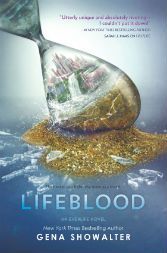 This guest post is by Gena Showalter. Showalter is the New York Times and USA Today bestselling author of over thirty books in paranormal and contemporary romances, as well as young adult novels. Her series include White Rabbit Chronicles, Angels of the Dark, Otherworld Assassins, Lords of the Underworld, Alien Huntress and Intertwined. Her novels have appeared in Cosmopolitan Magazine, and Seventeen Magazine, and have been translated all over the world. The critics have called her books “sizzling page-turners” and “utterly spellbinding stories,” while Showalter herself has been called “a star on the rise.” Her book, Lifeblood, is out now. Follow her on Twitter @genashowalter.
This guest post is by Gena Showalter. Showalter is the New York Times and USA Today bestselling author of over thirty books in paranormal and contemporary romances, as well as young adult novels. Her series include White Rabbit Chronicles, Angels of the Dark, Otherworld Assassins, Lords of the Underworld, Alien Huntress and Intertwined. Her novels have appeared in Cosmopolitan Magazine, and Seventeen Magazine, and have been translated all over the world. The critics have called her books “sizzling page-turners” and “utterly spellbinding stories,” while Showalter herself has been called “a star on the rise.” Her book, Lifeblood, is out now. Follow her on Twitter @genashowalter.
1. Create a solid foundation
As with any world in any book, I had to create a solid foundation, or theme, on which to build the afterlife realms. I like to think of it as building a house. If the foundation is sand, the house will fall when a storm comes. If the foundation is rock, the house will stand.
The entire Everlife series rests on the concept of good versus evil, light versus dark, kingdom versus kingdom. But who in their right mind would ever choose to live in the evil world? And yet, every day people make bad decisions that can ruin their lives. Right off the bat, I knew evil had to be seductive, and insidious, trying to pass itself off as good. On the other end of the spectrum, the light realm had to have its share of problems. Even good people make bad choices. [Like this quote? Click here to Tweet and share it!]
2. Build the frame
Readers need something familiar in order to visualize what you’re describing. That is why you must first craft the bare bones based on what they know. From there, you can put your own spin on the world, plot and characters.
Upon my good versus evil foundation, I created a familiar frame of good people in the light realm, and bad people in the dark realm. Twist: then I added good people in the dark realm, and evil people in the light realm. Now the reader can never know who is hero and who is villain.
[How Long Should Novel Chapters Be? Click here to find out.]
3. Add insulation
Once you have your foundation and frame, you can start adding new layers to your story arc, weaving world with plot and plot with character. “Each of your characters will need a goal, motivation and conflict.”
In Firstlife, book one of the Everlife series, the heroine is faced with challenges. Goal: survive. Motivation: make her own choice about where to live after she dies. Conflict: she’s falling in love with the light realm while also falling in love with a boy from the dark realm. Who will she choice? Home or boy?
In Lifeblood, everything changes for her. Goal: learn the ropes in her new homeland. Motivation: the survival of her home and her family. Conflict: people she loves live in the other realm, and yet she’s supposed to be the architect of their demise?
4. Decorate
Weave in the five senses. As your characters “see” “scent” “touch” “taste” and “hear,” so will your reader. Consider every scene in your book a mini story of its own. It needs a foundation, a frame, insulation and decoration.
In Lifeblood, I gave the characters an Internet-type connection in their minds to heighten each of the five senses. Through this connection—which can be turned on and off at will—they can also communicate with each other, store information and weapons, and rays of light or even shadows, depending on their realm affiliation.
[The 5 Biggest Fiction Writing Mistakes (& How to Fix Them)]
5. Set house rules, and do not break them
Every fictional world requires rules, just like in real life. For your afterlife world, you’ve determined the theme, twisted the plot to make it unique, set the scene, and decorated. Now you need to know, among other things, what happens to characters if they die again. Can they be killed again? How?
In the Everlife series, characters that live in one of the afterlife realms can die again. In Troika, they enter into another realm known as the Rest and in Myriad, they are told their spirit returns to earth to “Fuse” with a human soul…but who is telling the truth and who is lying?

Want to have the first draft of your novel finished one month from today?
Use this discounted bundle of nine great resources to make that happen.
Order now.
Thanks for visiting The Writer’s Dig blog. For more great writing advice, click here.

Brian A. Klems is the editor of this blog, online editor of Writer’s Digest and author of the popular gift book Oh Boy, You’re Having a Girl: A Dad’s Survival Guide to Raising Daughters.
Follow Brian on Twitter: @BrianKlems
Sign up for Brian’s free Writer’s Digest eNewsletter: WD Newsletter
Listen to Brian on: The Writer’s Market Podcast
You might also like:
The post 5 Tips on Writing About the Afterlife appeared first on Art of Conversation.
At IBPA Meeting, A Push for Parity
This content was originally published by on 1 January 1970 | 12:00 am.
Source link
Working to level the playing field for independent publishers, as well as for self-publishers and hybrid publishers, was one of the big topics at the IBPA's Publishing University held April 7-8 in Portland, Ore.
Source link
The post At IBPA Meeting, A Push for Parity appeared first on Art of Conversation.
Young Writers Call for Diverse Books at Children's Institute
This content was originally published by on 1 January 1970 | 12:00 am.
Source link
Jason Reynolds, Marley Dias, and Rachel Ignotofsky called on booksellers, many from a new generation themselves, to carry diverse books.
Source link
The post Young Writers Call for Diverse Books at Children's Institute appeared first on Art of Conversation.
The Legacy of David Letterman, Icon of the Grizzled Generation
This content was originally published by TOM CARSON on 10 April 2017 | 9:00 am.
Source link
It’s fair to say we got snookered. Early on, when “Late Night With David Letterman” defined his snark as the ideally frivolous antidote to the Reagan era’s cant, he passed himself off as, and possibly even was, a glib Hoosier wiseacre with no use for earnestness except as fodder for parody. His brand of ridicule was too reflexive to be concerned with whether or not its targets were deserving. The reason that callous streak seldom mattered was that he also never stopped insisting on his own (and TV’s) triviality.
Photo
But beginning in “Late Night’s” later years, he developed — unless the right word is “curdled” — into the crotchety main attraction of an eccentric, ever more self-referential psychodrama. It was as if he felt irresistibly goaded to turn Samuel Beckett’s “Krapp’s Last Tape” into thousands of hours of videotape. Of all the unlikely outcomes, he was suddenly the most authentic personality on television.
This arc says a great deal about not only Letterman himself, but his once impish, now grizzled generation’s shifting role in American life. Linking both is TV’s ascent from the potluck, more or less disreputable mass entertainment it still was in the early 1980s to our primary cultural — and, thanks to cable, artistic — arena, at least for a while. Well before Letterman’s retirement, social media had transformed the landscape all over again, and Fallon was the one who understood the uses of Twitter.
Continue reading the main story
Zinoman, who is this newspaper’s comedy reviewer, seems to have all those dimensions at his fingertips. However, he’s too lively a writer to get bogged down in show-offy theorizing. His big-picture commentary is so compressed and fluid that you often scarcely notice how casually he’s able to switch from micro to macro and back inside a single paragraph. As celebrity biographers go, he’s humane but not easily fooled (Zinoman interviewed Letterman, as well as many others associated with his shows). As a critic, he’s especially sharp and engaging when he’s breaking down Letterman’s trademark predilections, from the goofball love of peculiar locutions and nonsensically stressed clichés that evoked a sort of demented neo-Americana to how unerringly “his comedic instinct was to mock and belittle whatever world he inhabited.”
The latter impulse stayed constant even when the primary world Letterman inhabited on “Late Show” was his own curmudgeonly, dissatisfied brain. But it also predated his fame. As early as middle school, he was equating self-expression with media constructs, enlisting a classmate to stage sham talk shows on a mock set in the friend’s basement. (Shades of Rupert Pupkin in “The King of Comedy.”) By the time he got to college at Ball State University in Indiana, though, his invariable M.O. as a campus-radio disc jockey was to burlesque the conventions and/or pretensions of whatever format he was assigned, including introducing Debussy’s “Clair de Lune” with a breezy “You know the de Lune sisters. There was Claire, there was Mabel.” That particular bit of irreverence promptly got him canned, though not for long.
Continue reading the main story
Then followed a few scruffy years on local TV, including his celebrated stint as a smart-aleck weatherman, before he nerved himself to head to Los Angeles in 1975. Once there, he did stand-up at the Comedy Store, appeared on game shows, shot a failed pilot for one of his own, and spent a few unhappy weeks on Mary Tyler Moore’s flop variety series, “Mary.” Then he got booked on “The Tonight Show” at a time when Johnny Carson’s benediction was pure gold. Letterman’s own “The David Letterman Show” debuted on NBC in 1980, and though it didn’t last long — the morning time slot was all wrong for him — it provided the template for everything he was to do in late night.
By then, he’d already found an invaluable accomplice: the writer and comedian Merrill Markoe, his girlfriend for the better part of a decade and the decisive creative influence on both “The David Letterman Show” and “Late Night.” (“Without her, you and I wouldn’t be sitting here,” Letterman told an interviewer after their breakup.) But Zinoman gives almost equal credit to the veteran director Hal Gurnee, who grasped right away that television wasn’t only Letterman’s medium; it was his subject. Now that “meta” is the conceptual given of so much TV comedy, it’s easy to forget how inventive Gurnee’s visual equivalents of putting everything inside air quotes actually were. The same is true of Letterman’s longtime musical sidekick, Paul Shaffer, whose parody version of Vegas smarm defined “Late Night” as pure showbiz and pure anti-showbiz simultaneously.
Zinoman isn’t wrong to spend over twice as many pages on Letterman’s “Late Night” years — lasting just over a decade, from 1982 to 1993 — as his much longer stint hosting “Late Show” (1993-2015). After all, “Late Night” arguably changed the face of television, while its much plusher CBS sequel mostly just changed the face of its host. Not always for the better, either; as Zinoman observes, “Letterman increasingly played the horny creep” with female guests as he aged. He got a comeuppance of sorts when a 2009 blackmail threat forced him to pre-emptively admit he’d cheated on his wife with more than one of the show’s staffers. By then, however, he was such a famously odd duck that Steve Martin congratulated him on the air for humanizing himself.
Continue reading the main story
Interestingly, even on “Late Night,” Letterman had much less investment in staying quirkily cutting-edge than his writers did, particularly once alumni of The Harvard Lampoon and “Saturday Night Live” began dominating the writers’ room and pushing for more audacity. Emulating and eventually succeeding Johnny Carson remained his goal, one he fell short of once Jay Leno inherited “The Tonight Show” instead. Despite Zinoman’s Generation X birth date, he knows his television history well enough to argue that Letterman was as much a throwback to midcentury TV as a postmodern iconoclast, modulating from Steve Allen’s style (waggish, superior and happily ridiculous) to Jack Paar’s (neurotic, confessional, tormented). Yet Letterman’s true originality may be that only a Midwestern boomer who was every bit as easily unnerved as he was nervy could have combined the two. Or, at any rate, turned them into chapters of the same generational odyssey.
Continue reading the main story
The post The Legacy of David Letterman, Icon of the Grizzled Generation appeared first on Art of Conversation.
Bookstore News: April 10, 2017
This content was originally published by on 1 January 1970 | 12:00 am.
Source link
Michigan used bookstore to close after 39 years; future of Kansas bookstore uncertain after fire; Alaskan glacier bookstore gets new management; and more.
Source link
The post Bookstore News: April 10, 2017 appeared first on Art of Conversation.
Alec Baldwin accuses HarperCollins of sloppy editing on his memoir | Books
This content was originally published by Danuta Kean on 10 April 2017 | 11:03 am.
Source link
Alec Baldwin, whose impersonations of Donald Trump have skewered the thin-skinned US president for the amusement of Saturday Night Live audiences for months now, has proved to have a weak spot: poor editing.
The 59-year-old actor has attacked his publisher HarperCollins, accusing the editors of poor proofreading. In his first post on a Facebook page set up to promote his new autobiography, Nevertheless, he claimed the published edition “contains SEVERAL typos and errors which I was more than a little surprised to see”.
Declaring he would use the Facebook page – originally set up to showcase material that did not make the final edit of the book – as an index of corrections and amendments to the text to bring it in line with his original intent, the 30 Rock star wrote: “The editors at HarperCollins were, I imagine, too busy to do a proper and forensic edit of the material.”
As his first amendment, he offers a clarification to his statement in the memoir that when he wrote in the book that he was “in love” with his female co-stars Megan Mullally, Kate McKinnon and Tina Fey, he was referring to his passion for their talent. The celebrity added: “As a happily married man who wants to stay that way (ahem), I wanted to clarify that.”
Though the actor’s publisher HarperCollins360 declined to comment about the outburst, Baldwin’s fans were forgiving. “The author is not responsible for typos and grammatical errors, folks,” wrote Myra Lawrence, after a slew of critical comments from pro-Trump posters who used Baldwin’s statement as a chance to attack the actor. Lawrence added: “That’s why you hire an editor. Clearly, they did not provide the service for which they were paid.”
Diane Jordan, who published a children’s book five years ago, sympathised with Baldwin. “I was mortified by the editing that did not occur. It is almost impossible to edit a work you have written and rewritten so many times,” she wrote.
Not all the comments were so supportive. YA novelist and producer Jeff Rivera told Baldwin to look closer to home for a culprit. “Having worked with major publishers, they make authors sign off on every single comma change they make in their copyedit before they go to press,” he posted. “So you or someone from your team (whoever reviewed the final draft) did not do their job. Blame them, not the book publisher.”
Despite the typos and errors, the book received decent reviews on release last week. Writing in the Guardian, Fiona Sturges praised Nevertheless for its charm and candour, although after noting a litany of moans about directors, fellow stars and slights, she added: “There’s a moment where, while discussing a series to be fronted by Baldwin, a producer on the cable and satellite network MSNBC puts her finger over her mouth in a shushing motion and says to him, ‘Stop complaining.’ Exactly, you think.”
The post Alec Baldwin accuses HarperCollins of sloppy editing on his memoir | Books appeared first on Art of Conversation.
April 9, 2017
How to sniff out the best reading matter | Letters | Books
This content was originally published by Letters on 9 April 2017 | 5:30 pm.
Source link
Claire Armistead’s article (8 April) on the smell of books is delightful: I can often recall my first reading of a book when I smell it. But she focused on the paper and didn’t touch on the pungent and very different smells of ink.
Writing to the TLS more than a decade ago, the Australian poet John Tranter describes what many people, with perhaps a little embarrassment, discreetly do: “Half-open the book, stick your nose into it, and inhale: the spicy scent of hand-blended printer’s ink, preserved between the closed pages for nearly a hundred years, is delicious. It has odours of wax polish and old saddles and a hint of burnt heather, with a suggestion of Laphroaig whisky around the edges. And yes, like Laphroaig, its smell is reminiscent of pipe tobacco”
And the differences of smell were far from random. Douwe Draaisma tells the wonderful story of a woman reading a book who suddenly felt overwhelmed by a sense of loneliness. “She came to realise that, as a child, all her books were printed in London, and that English and American print have very different odours.” The joyfully diverse smell of books is a cocktail of paper, chemicals, mould and ink. Modern books all seem to smell much the same.
Martin Rose
Saffron Walden, Essex
• The smells of books, yes but what about the press? Private Eye, the London Review of Books and New Scientist each have an individual odour, perhaps not only due the ink. All British newspapers smell to me of iPad, but may I invite readers to start sniffing the papers on display where they shop, and to write about their experiences? They could perhaps wrinkle their nose or gag as they sniff a right-whinge tabloid, then sigh happily at the Guardian’s warm aroma, which might even increase sales.
Brian Smith
Berlin, Germany
• Join the debate – email guardian.letters@theguardian.com
• Read more Guardian letters – click here to visit gu.com/letters
The post How to sniff out the best reading matter | Letters | Books appeared first on Art of Conversation.



